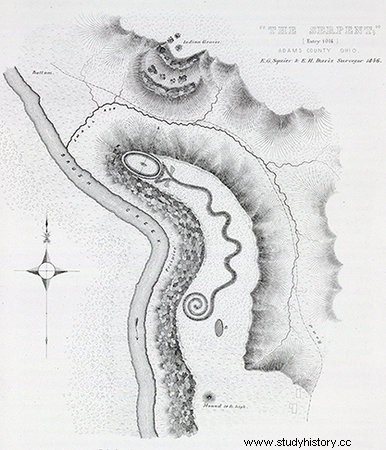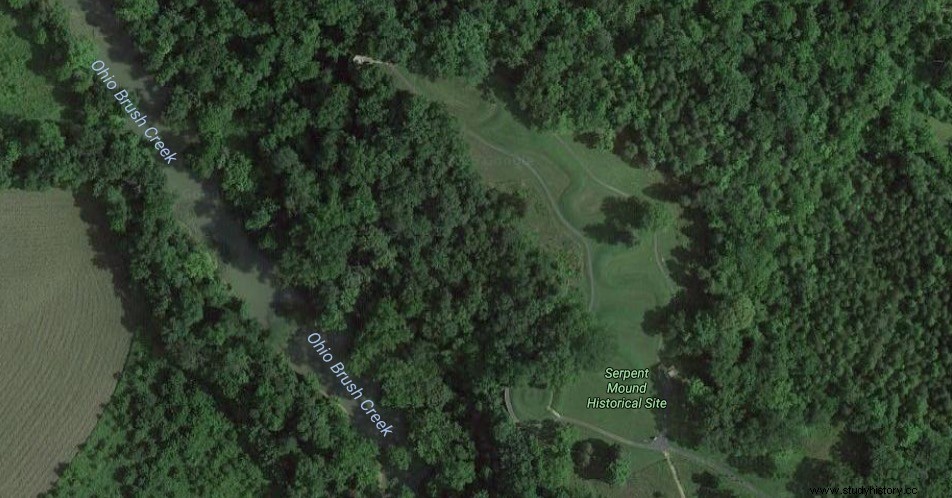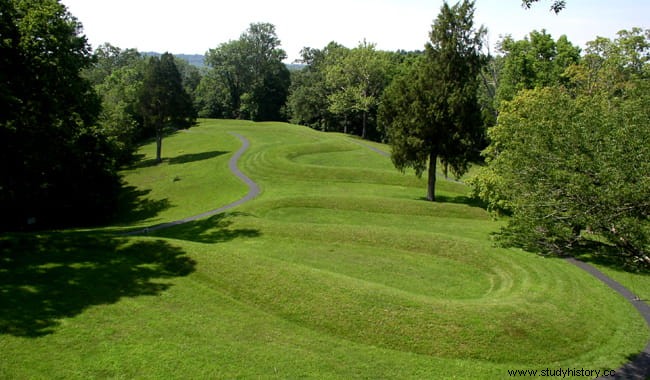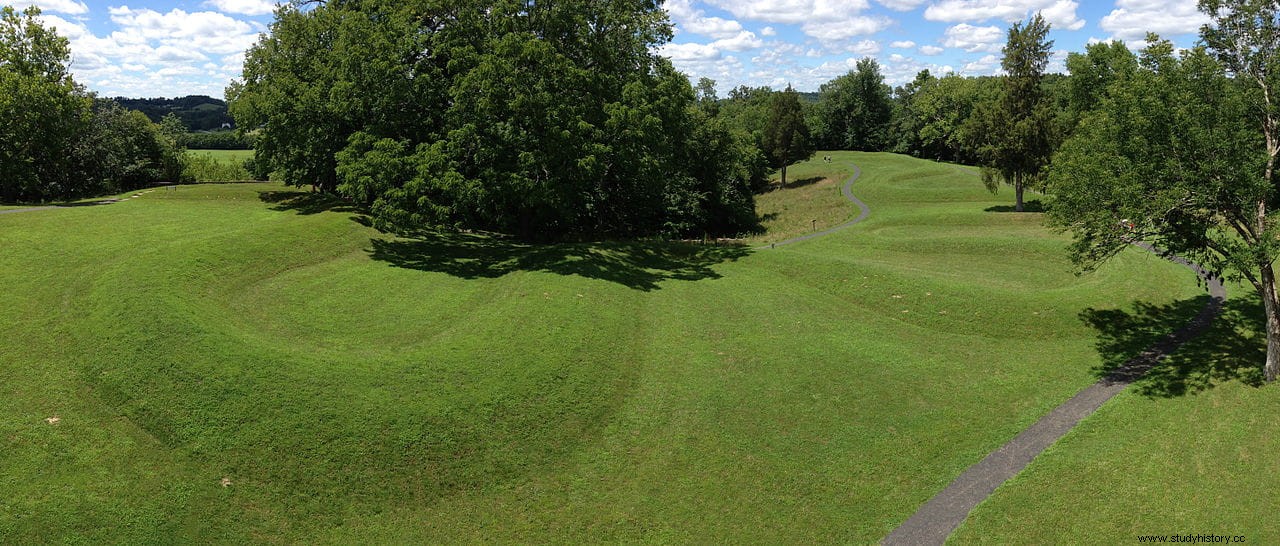At over 1,300 feet long, the Great Serpent Mound is one of the most enigmatic buildings in the United States.
It is located in Adams County in Ohio and its name alludes to its reptile-like shape with a triangular head and undulating body that curls into a spiral at the end.
Its dimensions, 411 meters long by 6 meters wide and 1.2 meters high, make it the largest mound-effigy in the world , a type of burial mound that can be found in other areas of the Earth and that was built with zoomorphic or anthropomorphic profiles.

It was first discovered and explored in 1846 by Ephraim Squire and Edwin Davis, who published an early description in their 1848 book Ancient Monuments of the Mississippi Valley sponsored by the Smithsonian Institution.
The exact date of its construction is not known, although the general consensus is that it is a prehistoric monument. Nor what was its function, beyond the archaeological evidence that shows that there could have been a kind of altar in front of the figure's head.
Research has successively attributed its construction to three indigenous prehistoric cultures. At first it was thought that it could be the work of the Adena culture, but in 1996 radiocarbon dating of pieces of charcoal found inside it placed it around the year 1070 AD, during the Fort Ancient culture. The latest tests bring that chronology back to 300 BC, again to the Adena culture , which spread across the northeastern central United States between 1000 and 200 BC. approximately.
In fact, numerous tombs and human remains of the Adena culture were found in the vicinity of the place in the 1880s, which would indicate a funerary function. But inside the mound no objects associated with this culture have appeared, which is common in other similar sites. So the currently prevailing theory is that a post-Adena culture may have reused and expanded the site for their own purposes.

However, Lenape and Iroquois legends say that it is the work of the Allegheny or Allegewi , a people who supposedly inhabited the Ohio Valley in prehistoric times before the Adena, and thus before 1200 B.C. But there is no archaeological evidence to back it up.
The figure is reminiscent of similar ones found in Scotland and in Canadian Ontario, with the peculiarity that this one has its mouth open, as if it were about to devour the circular object what is in front of you. For some it would be an egg, others consider it a solar symbol or a small animal like a frog.
This circular object has given rise to an alternative theory enunciated in 1987 by Clark and Marjorie Hardman, who think that it is aligned with the sunset during the summer solstice. On this basis, other researchers believe that the curves of the snake's body coincide with lunar alignments, and even that the entire figure is aligned with the two solstices and the two annual equinoxes.

Furthermore, these researchers believe that if the date of construction was 1070 AD, it could have been influenced by two astronomical events :light from the supernova that created the Crab Nebula in 1054 AD. and whose light would have been visible for two weeks, even by day, and the appearance of Halley's Comet in 1066 AD
On the other hand, it has also been suggested that the shape of the snake coincides with that formed by the stars of the Dragon constellation , with the ancient pole star Thuban (Alpha Draconis) at its center. This would be indicative, according to the defenders of this hypothesis, that its construction dates back to about 5,000 years ago, based on the position of the constellation at that time.

The mystery of the place does not end there. It turns out that in addition to all of the above, the mound is located just above an astroblem, that is, the depression produced by the impact of a meteorite about 250 million years ago, as geologists from the University of Glasgow confirmed in 2003.
Serpent Mound was included by National Geographic in its list of Wonders of the Ancient World , and today it has a museum dedicated to the place and the Adena culture, being one of the most visited monuments in the area.
